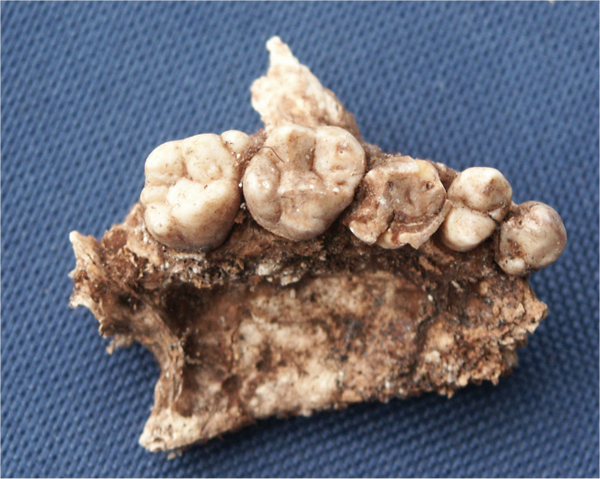Anthropological analysis of the Roman period archaeological sites from Slovenia
Project Team
Mateja Belak-
Project ID
J6-7590
-
Duration
1 September 2005–31 August 2008 -
Project Leader
Petra Leben Selja, PhD
The aim of this project is to create the anthropological database of Roman period skeletons from Slovenia. For the beginning three different archaeological sites were chosen: Brezje near Zreče (50 skeletons), Dobova at Brežice (30 skeletons) and part of necropolis at Ptuj (250 skeletons). Apart from the period the sites were selected according to their size and the possibility of comparison with already analized nearby sites. Complete anthropological analysis will be carried out by standard methods (palaeodemography, anthropometry, tooth analysis, palaeopathology, analysis of epigenetic traits and occupational stress markers) to acquire the knowledge of physical appearance of people and their way of life. The results will be of importance not only for historical anthropology as they will help archaeologists in assessing more data from individual graves as well as from relationships inside the necropolis (children and adult mortality patterns, physical appearance of people, eventual kinship ties, in some cases also possible occupation or cause of death). With this project our previous research of early medieval skeletal series will be continued (in last 15 years about 1500 skeletons have been analysed, 1300 from the old Slav period and 200 from the migration period) which have pointed out the differences in dental caries frequencies and in physical appearance between the indigenous and Slav population. So far, results indicate the replacement of population on today Slovenian territory in the Early Middle Ages and reject popular »Venet's theory« but several questions still remained open, first of all because of too small number of analysed skeletons. The anthropological analyses of Roman period skeletal series would at least partially fill up this gap and contribute to the understanding of Slovenian ethno-genesis process. Only large enough anthropological databases can represent the groundwork for statistical comparative analyses and make possible for objective interpretation of results which is not merely the product of subjective preferences.

A tooth from the sceleton S1 from Rifnik.
Orthodontic anomalies in tooth growth were present. In skeleton S 1 from the sarcophagus this is an anomaly in the outgrowth of the second premolars
We intend to find the answer on two questions primarily:
- do the two different morphological types which are in small number found at all late Roman sites from Slovenia (tall robust dolichocranial type and brachycranial type) represent the remnants of autochthon population or are they the representatives of new arrivals,
- are the observed differences in dental caries frequencies result of different »ethnic« origin or indicator of differences in the way of life.
Apart from the basic goal of this project the anthropological analyses will in future also contribute to the broadening, advancement and improvement in some natural sciences. Recently the Slovenian scientists started the research work on microelement, stable isotope and ancient DNA analyses, and the anthropological data are of most importance for the interpretation of their results.
LEBEN-SELJAK, Petra. Antropološka analiza poznoantične skeletne serije z Rifnika / Anthropological analysis of skeletal remains from the Late Roman Necropolis at Rifnik.. Arheološki vestnik 57, 2006, 427-455.
LEBEN-SELJAK, Petra. Zaključno poročilo o rezultatih raziskovalnega projekta 2005-2008 : antropološka analiza izbranih antičnih arheoloških najdišč Slovenije. Ljubljana: ZRC SAZU Ljubljana, Inštitut za arheologijo, 2008. loč. pag. [COBISS.SI-ID 2199887]
KARO, Špela, KNIFIC, Timotej, LEBEN-SELJAK, Petra, LUX, Judita, NEMEČEK, Nataša, SAGADIN, Milan. Lajh : stičišče evropskih kultur v 6. stoletju. Ljubljana: Zavod za varstvo kulturne dediščine Slovenije, 2008. ISBN 978-961-6420-36-5. [COBISS.SI-ID 243287040]
LEBEN-SELJAK, Petra. Antropološka analiza dveh okostij z grobišča Kolaciona. V: DJURA JELENKO, Saša, KUMPREJ GORJANC, Maja, TOŠKAN, Borut, LEBEN-SELJAK, Petra, DIRJEC, Janez, JAVORNIK, Simona. Svet živih - svet mrtvih : Kolaciona - 100 let : katalog občasne razstave. Slovenj Gradec: Koroški pokrajinski muzej, 2009, str. 23-24. [COBISS.SI-ID 2201423]